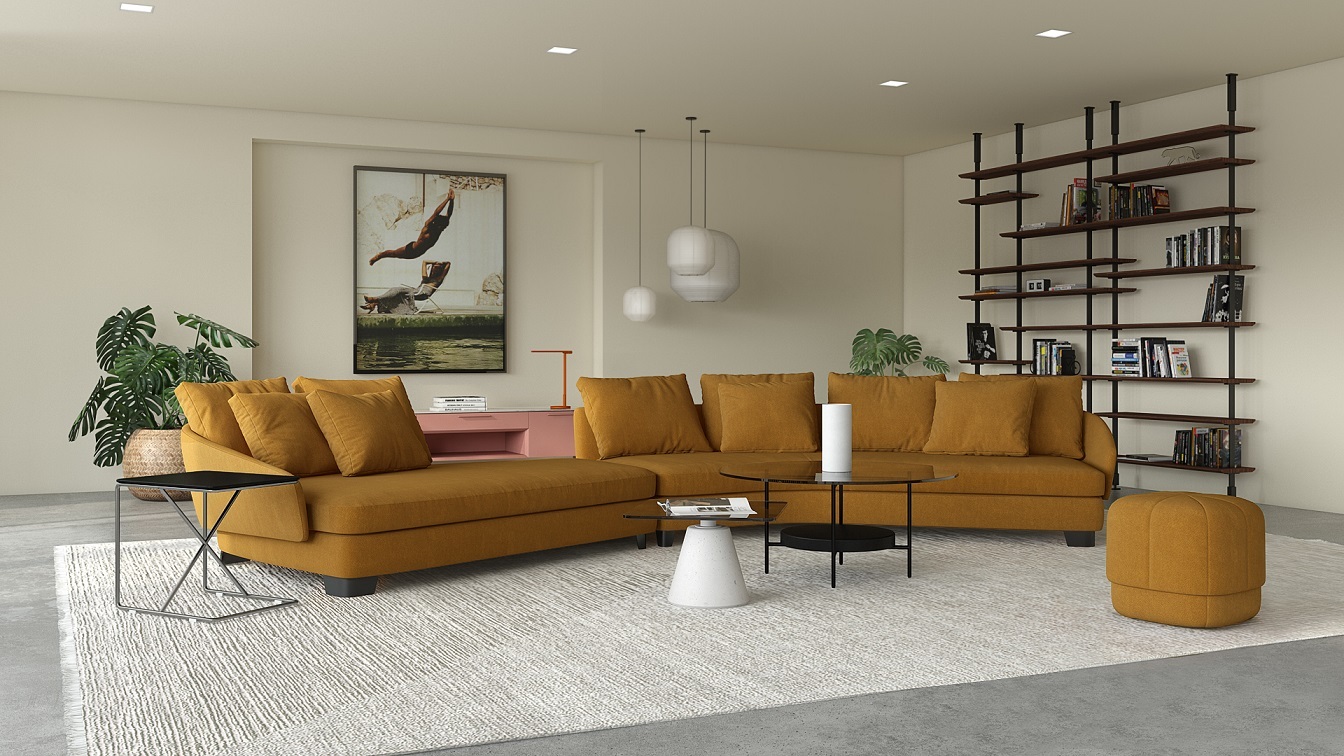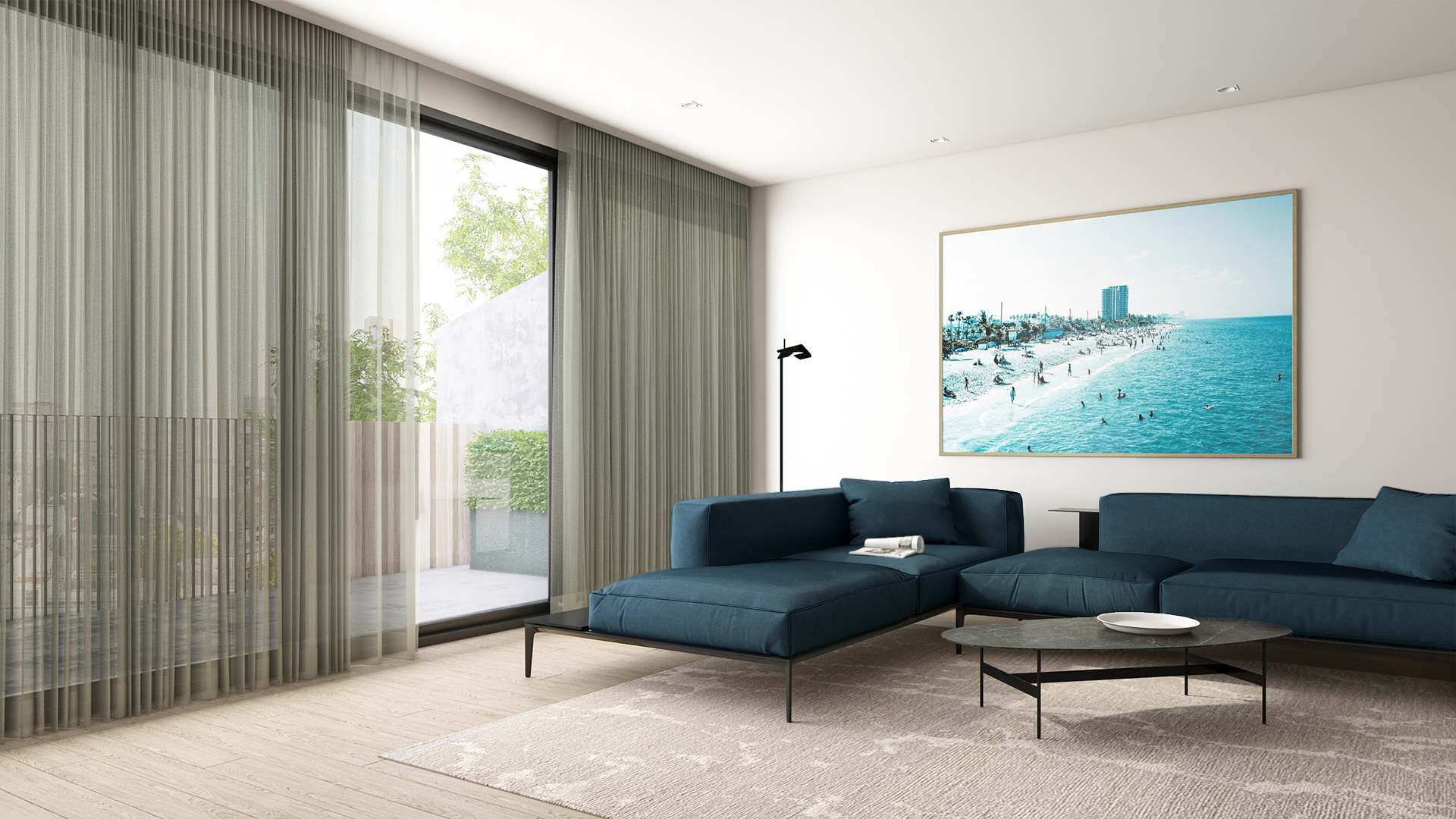How FibreGuard’s digital fabric twins drive sustainability
The biggest limitation to sustainable product design and manufacturing may be our imagination, and as a future-driven industry, there’s much that textiles can learn from tech.
Innovation leads to solutions for sustainability challenges: we’re seeing this in so many industries across the world.
We’re thrilled to let you look inside our own innovation track at FibreGuard today.
Building a circular economy with digital fabric technology
Digitised fabrics are instrumental in furthering the sustainability practices of architecture and design firms. They speed up prototyping, marketing and selling while also increasing the scope of product development and market reach.
So, what does FibreGuard contribute to a circular economy that is innovative, reduces waste and boosts sustainability? The answer is: digital fabric twins.
Looking beyond the current take-make-waste extractive industrial model, a circular economy aims to redefine growth, focusing on positive society-wide benefits. It entails gradually decoupling economic activity from the consumption of finite resources, and designing waste out of the system. – The Ellen MacArthur Foundation
Digital visualisation is a fascinating technological development in the world of interior design and architecture. Digital fabric twins play a massive role in this, and they also contribute towards the creation of a circular economy.
Related read: How photorealistic rendering is transforming the architecture industry
Digital fabric twins: a waste-free solution to the impact of fabric sampling
As the name indicates, a digital fabric twin is the digital reproduction of a physical fabric. These digital twins always show the true colour and texture of the fabric and have a variety of applications for different businesses.
Minimising the environmental impact of fabric sampling is one key aspect we’re focusing on as a company. Fabric samples sent back and forth in the prototype phase ultimately end up in landfills.
By using digital twins, waste is drastically reduced by complementing digital design and prototyping processes with high quality, photorealistic digital representations of the fabric.
This instantly eliminates the need for samples.
Let’s look at what happens when this need for samples disappears. There are further knock-on effects when samples disappear from the production process.
Transportation of samples, for example, contributes tremendously to the carbon footprint of the industry. When the need for shipping is cut down because of digital twins, this carbon footprint diminishes too.
Another advantage of going digital is being able to improve the accuracy of calculations for material required. This results in even less waste than before.
Learn more about TwinBru, our service that provides high quality renders of interior furnishings & scenes with 3D digital fabrics that match the actual fabrics.

The business case for digital fabric twins
Firstly, digital fabric twins help wholesalers and retailers reach even wider audiences.
Where fabric wholesalers or retailers still rely heavily on sample books, a digital version with digital fabric twins opens their market reach with online communication and e-commerce opportunities.
By working with digital prototypes, they save time on physically creating pieces of furniture to assess the viability of a new or custom design. Clients are also able to view the creation when it may not yet exist on a showroom floor.
Interior designers and architects can keep digital samples of materials for creation of interior schemes and mood boards for client projects. This allows them to communicate designs successfully, saving on time in meetings, transport, sample storage and reducing the minor expenses associated with presentation.
Secondly, environmental corporate responsibility is growing, and is driven by consumer demand.
A 2019 study quoted by the Harvard Business School, found 73% of global consumers are willing to change their consumption habits to lessen their negative impact on the environment. It also illustrated that sustainable product sales have grown by nearly 20% since 2014. Research from The Economist Intelligence Unit, commissioned by WWF, shows a staggering 71% rise in online searches for sustainable goods globally over the past five years.

Sustainability is for everyone: it’s time to work smarter
Sustainability is everyone’s responsibility, no matter whether you’re a small business, a freelancing designer, or a thriving global business with multiple warehouses and hundreds of employees. For businesses it’s seen in the effect that the business has on society and the environment.
Sustainability is much broader than many people think as well. It addresses issues such as climate change but also concentrates on fair working conditions, income inequality and prejudice.
Innovations like FibreGuard’s digital fabric twin technology are enhancing sustainability strategies of organisations worldwide. Innovations like these can be harnessed to improve operational systems as well as the bottom line. They’re helping companies expand into international markets and are part of the solutions we need to create fully functional circular economies.
Partner with us and be part of future-driven change. Contact us today.
